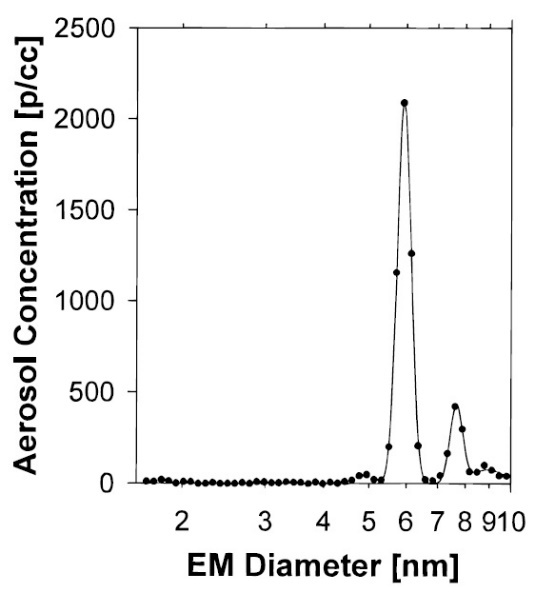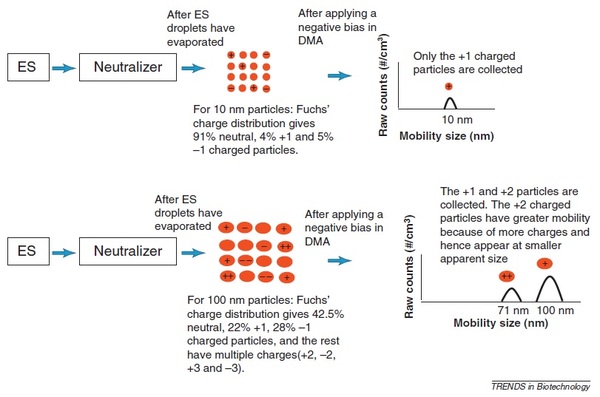| << Chapter < Page | Chapter >> Page > |
ES-DMA provides information of the mobility diameter of particles and their concentration in number of particles per unit volume of analyzed gas so that the particle size distribution is obtained as shown in [link] . Another form of data representation is the differential distribution plot of ΔN/Δlogd p versus d P ( [link] ). This presentation has a logarithmic size axis that is usually more convenient because particles are often distributed over a wide range of sizes.

To obtain the actual particle size distribution ( [link] ), the raw data acquired with the ES-DMA is corrected for charge correction, transfer function of the DMA and collection efficiency for CPC. [link] illustrates the charge correction in which a charge reducer or neutralizer is necessary to reduce the problem of multiple charging and simplify the size distribution. The charge reduction depends on the particle size and multiple charging can be produced as the particle size increases. For instance, for 10 nm particles, the percentages of single charged particles are lower than those of neutral particles. After a negative voltage is applied, only the positive charged particles are collected. Conversely, for 100 nm particles, the percentages of single charged particles increase and multiple charges are present. Hence, after a negative bias is applied, +1 and +2 particles are collected. The presence of more charges in particles indicates high electrical mobility and particles are observed at smaller diameter.

The transfer function for DMA modifies the input particle size distribution and affects the resolution as shown in [link] . This transfer function depends on the operation conditions such as flow rates and geometry of the DMA. Furthermore, the transfer function can be broadened by Brownian diffusion and this effect produces the actual size distribution. The theoretical resolution is measured by the ratio of the sheath to the aerosol flow in under balance flow conditions (sheath flow equals excess flow and aerosol flow in equals monodisperse aerosol flow out).

The CPC has a size limit of detection of 2.5 nm because small particles are difficult to activate at the supersaturation of the working fluid. Therefore, CPC collection efficiency is required that consists on the calibration of the CPC against an electrometer.

Notification Switch
Would you like to follow the 'Physical methods in chemistry and nano science' conversation and receive update notifications?